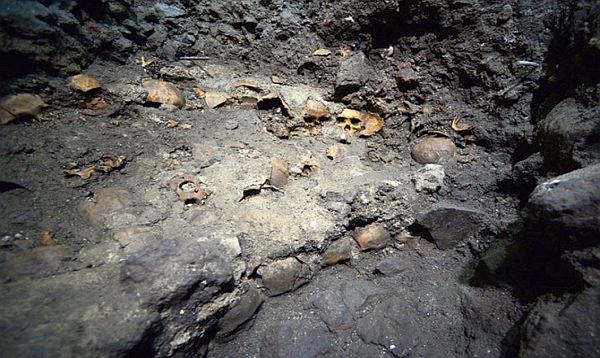Mexico City - The National Institute of Anthropology and History (INAH) in Mexico announced on Thursday, Aug. 20, the discovery of an ancient skull rack located in Mexico City's historic center.
The pre-Hispanic rack, dubbed Huey Tzompantli, has appeared in Codex Duran illustrations, as well as in manuscripts of the Codices Matritenses during the latter half of the 16th century in New Spain.
The Codex Duran describes the story of the Aztec people and was written by a friar of the Dominican Order named Diego Duran. Codices Matritenses, on the other hand, are early texts compiled and arranged through ethnographic research made by a Franciscan friar named Bernardino de Sahagun.
Eduardo Matos, one of the archaeologists who led the discovery of the Tzompantli, said that the ancient skull rack and its function are an interesting find because they are both mentioned in historical sources.
Matos explained that the Tzompantli had served to hold the skulls of people who were beheaded through the use of several poles and rods in different rituals.
"We believe we have found the Huey Tzompantli," Matos said. "Many of these skulls could be enemies of the Aztecs who were captured, killed and beheaded in a show of might."
The skull rack, which stands at 45 centimeters (17.7 inches) high, was discovered in a building located on a street in Guatemala, near the ruin site of Templo Mayor in the Zocalo district of Mexico City.
Matos added that the skull rack, together with other ancient structures, such as the Xochicalco ruins in Templo Mayor's western portion, as well as the Juego de Pelota, provides evidence that these buildings were already shown in various codices and pictographs from the 16th century. He said that these points have been confirmed through archaeology. Matos, who has headed excavation efforts at the Templo Mayor ruins since 1978, pointed out that all the structures, including more than 45 ancient buildings that were unearthed in complete or partial ruins, have all been discovered through the Urban Archaeology Program.
The archaeology program has led to the discovery of over half of the 78 sites described by de Sahagun in his codex. Matos said that the newly discovered ancient skull rack will be opened to the public once researchers complete the excavation.
Original article


